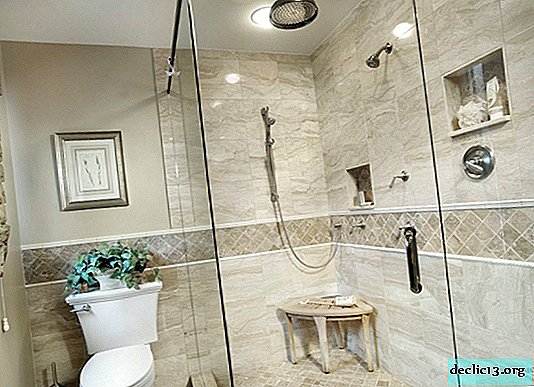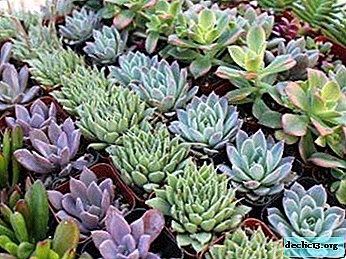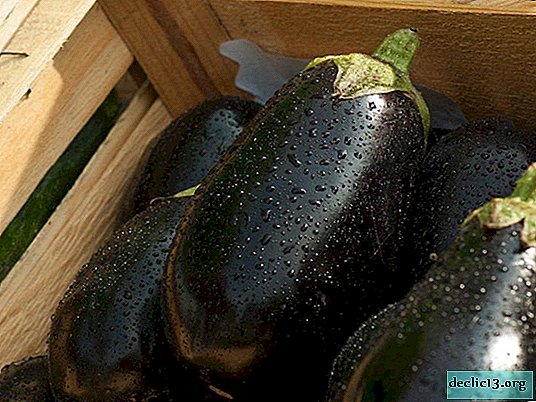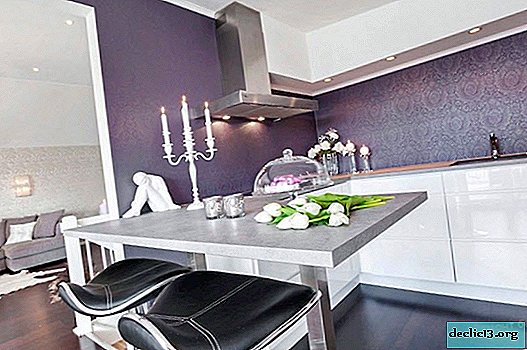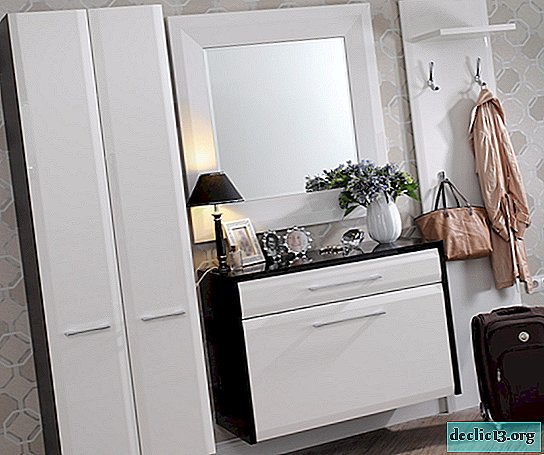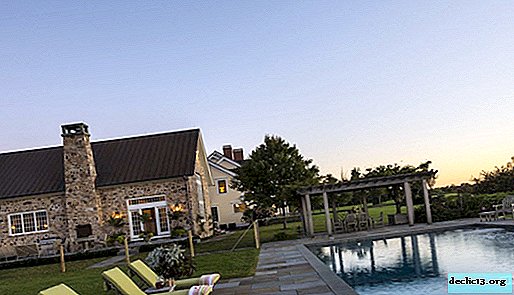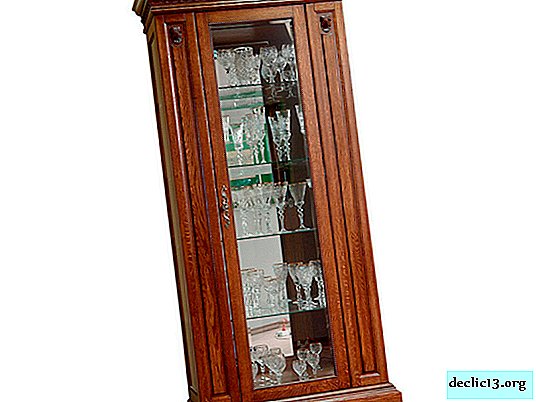We analyze all the important points regarding the propagation of balsam by cuttings
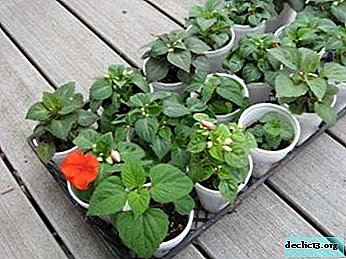
Even a novice florist would be generally familiar with reproduction through cuttings.
Another question is that this method is not suitable for all plants, but in working with others there are rules and prohibitions.
Today we will talk about the grafting of balsam. How to do it right, in the end to get a full-fledged young plant, and also learn how to properly care for the plant after planting and what kind of growing problems you may encounter.
Plant description
REFERENCE! "Roly wet", "touchy" and even "Lizzy zealous" - all these are nicknames of balsam. The scientific name is translated from Latin as "impatient", for the ability of the fruit to crack, scattering seeds, from a light touch. Another interesting feature of this plant is droplets of moisture protruding along the edge of the leaves.Indoor balsamin is distinguished by a very lush and long-term flowering. Its small, 4-6 cm in diameter, white, yellow, red flowers, as well as two-tone, can be simple and double.
 Dense juicy stems have short internodes. Leaves abundantly cover the stem, have the correct shape with a smooth or serrated edge. The color spectrum of leaves includes various green shades.
Dense juicy stems have short internodes. Leaves abundantly cover the stem, have the correct shape with a smooth or serrated edge. The color spectrum of leaves includes various green shades.
Compact bush: dwarf varieties - up to 25 cm, others - about 40 cm.
The geographical birthplace of balsam is Africa, Asian countries.
Therefore, in mid-latitudes, landing in open ground is possible only in the warm season. However, more often it is used as a houseplant.
How to propagate at home?
Balsam can be propagated in two ways:
- The seeds. The process is long and painstaking, since balsam seeds do not germinate well, and most sprouts die at the initial stage. For their germination special conditions are required. In addition, the result may not please. Indeed, most varietal plants do not give their seeds all their characteristics. As a result, a plant with simple flowers can turn out.
- Cuttings. The most optimal and effective method. With its help, you can easily and quickly get a new balsam plant, corresponding to the characteristics of the donor plant. This method is not suitable only for annual balsam.
General rules for cutting
Let us consider in detail how to cut and what conditions must be provided for a good result:
- Time. Cutting garden balsamins is recommended at the end of summer, but you can do this at any time, except for the period of bud formation and active flowering.Important! For indoor plants, the most successful breeding time is the beginning of spring. The plant enters the active phase, flowering has not yet begun, and natural lighting conditions are favorable. Planted in March, the stalk will bloom along with other plants in the summer.
- The soil should be structured, porous with slightly acidic or neutral reaction. Suitable soil for indoor plants. If you prepare the soil yourself, do not overdo it with nitrogen-containing additives, such as humus and compost. Excess nitrogen is harmful to most flowering houseplants, including balsam.
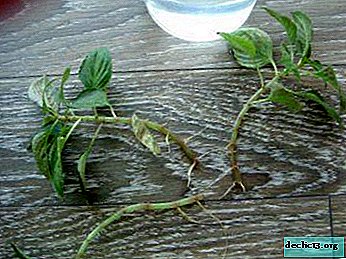 The capacity for rooting is small, for example, a plastic cup, followed by a transplant into a pot.
The capacity for rooting is small, for example, a plastic cup, followed by a transplant into a pot.- The optimum temperature for rooting is 20-25 degrees.
- Cuttings need to be cut from young and healthy shoots.
- It is possible to use a shelter with polyethylene, especially in the heating season, when the air is dry. However, in this case, you need to carefully monitor the cuttings so that they do not rot.
Training
How do we prepare planting material:
- With a sharp knife, we cut off the shoot with the tip of 8-10 cm in length.
- You need to cut it under the sheet, at an angle of 45 degrees.
- On the handle there should be no buds or flowers.
- There should be 2-3 internodes on the shoot.
- We remove the lower leaves, leaving 4-6 at the top.
Rooting in water
Balsam has roots in the water, so you can just put the cuttings in the water. You need to immerse the bare stem, the leaves of the water should not touch. A glass with cuttings should be put in a warm, bright place until the roots sprout. After one and a half to two weeks, the seedling is ready for planting in a pot for permanent residence. You can add a stimulant to the water, such as root.
Attention! Do not put several cuttings tightly in one dish. In this case, they can rot before the roots appear. Air should circulate freely in the container with the cuttings, and they should not touch each other.Landing
 A stalk with roots obtained in water is planted in a small pot with fertile soil. At the bottom of the pot must be laid drainage. Rooting in the ground Another way of rooting is in the ground. This method requires a special soil composition. A mixture of peat, vermiculite and perlite in a ratio of 1: 1: 2 is recommended.
A stalk with roots obtained in water is planted in a small pot with fertile soil. At the bottom of the pot must be laid drainage. Rooting in the ground Another way of rooting is in the ground. This method requires a special soil composition. A mixture of peat, vermiculite and perlite in a ratio of 1: 1: 2 is recommended.
But you can mix sand and peat in equal proportions. Soil is placed in a small container, moisturized well. The shoot is placed in the soil a third of its length. The soil is well pressed to the cuttings. A container with a seedling is covered with a plastic bag. Keep in a warm, bright place, periodically ventilate.
Transfer to a permanent place
If everything went well, the cuttings planted for rooting in the ground will be ready in a week. In a plastic cup, the roots can be observed through the walls. In any case, after a couple of weeks you can transplant him to a permanent place of residence. About the soil, capacity and drainage has already been said.
In more detail about the intricacies of planting and subsequent care, we talked about in this article.
What to do after?
Now let's talk about how to care for a young plant after rooting, what conditions it needs to provide:
- Balsam Loves Sunlightbut soft, not scorching. The southern windowsill is not suitable for him; it is better to put it in a room near the window. With insufficient consecration, flowering may not occur.
- The temperature for Vanka wet should be normal room temperature. Sudden swings and drafts are not welcome. In winter, a slight decrease is permissible, +12 is the minimum lower limit for balsam.
- Balsam needs plenty of watering, the ground must be constantly moist. However, the young plant should be watered carefully at the initial stage. It does not use much water yet. You can destroy a flower by filling it. In winter, watering is reduced, but the land still should not dry out.
- In summer, the plant can be placed on the street or balcony. The place must be protected from sudden gusts of wind. Staying in the open air has a beneficial effect on the appearance of balsam. The bush becomes more magnificent, blooms better.
- Like all flowering plants, balsam needs fertilizing with mineral fertilizers. Such care measures will give strength to the plant for a long and lush flowering. They feed the flower from the beginning of spring to the end of flowering with fertilizer for flowering plants every 10-14 days. After transplanting a young seedling to a permanent place, fertilizers can be applied after 2-3 weeks, as soon as the balsam is adapted in a new place. How to water and how to feed this plant for abundant flowering, read here.
Additional nitrogen fertilizer application is not recommended. This can lead to overgrowth of greens, poor flowering and various diseases. To replenish the required amount of nitrogen, it is enough to carry out transplants with soil replacement.
- The transplant should be carried out annually. The pot should be taken a couple of cm larger diameter.
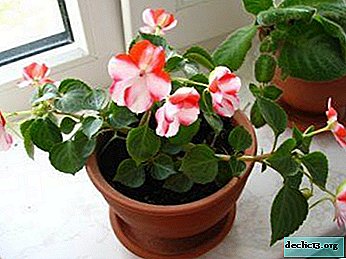 When you transplant balsam into a new pot, almost the entire volume should be occupied by its roots, only a small distance near the walls of the pot is covered with new soil. Too large a pot will lead to the fact that flowering this year will not come.
When you transplant balsam into a new pot, almost the entire volume should be occupied by its roots, only a small distance near the walls of the pot is covered with new soil. Too large a pot will lead to the fact that flowering this year will not come. - Plant formation. Too long shoots pinch to get a lush bush. Remove excess branches, faded buds, wilted leaves, constantly maintaining the appearance of balsam in the right quality. Pinching contributes to the formation of more flowers. But too large a lesion can lead to stress.
Read about the features of home balsam care here, and all the nuances of growing and breeding at home can be found in this article.
Possible problems
Unfortunately, errors sometimes occur, and something fails. Consider the most common troubles and methods for eliminating them:
- Cuttings are in the water, but there are no roots? Make a fresh cut and try to root them in the ground;
- Cuttings in the soil did not give roots? Most likely, the earth was not moistened enough, or you did not cover the container;
- Cuttings may not take root with a lack of light and low temperature;
- After transplanting into a pot, the plant froze? Everything is in order the sapling builds up the root system, after which the aerial part will grow.
Useful video
Watch a video about the propagation of balsam by cuttings:
Conclusion
Balsam is an unpretentious plant, so they usually get cuttings without problems. But sometimes, for no apparent reason, the cuttings do not take root. Be patient and try again. Change the way and the soil, try to do it at another time. I am sure that you will surely succeed!

 The capacity for rooting is small, for example, a plastic cup, followed by a transplant into a pot.
The capacity for rooting is small, for example, a plastic cup, followed by a transplant into a pot. When you transplant balsam into a new pot, almost the entire volume should be occupied by its roots, only a small distance near the walls of the pot is covered with new soil. Too large a pot will lead to the fact that flowering this year will not come.
When you transplant balsam into a new pot, almost the entire volume should be occupied by its roots, only a small distance near the walls of the pot is covered with new soil. Too large a pot will lead to the fact that flowering this year will not come.


